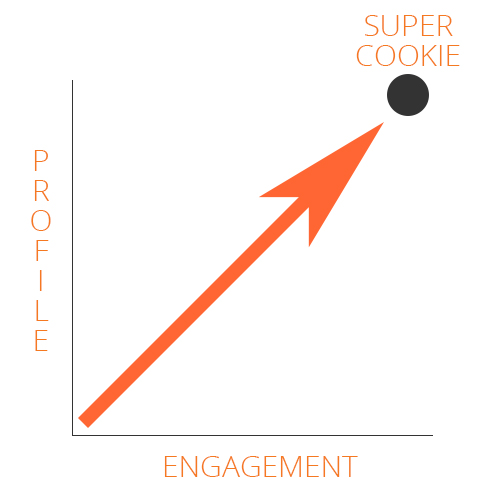Customer Data Platform (CDP) do marketers need another database?
David Judd
In a word, Yes. But with great power comes great responsibility! What the marketer does with this knowledge is the critical element.
One of the most hyped martech terms for 2018 is the Customer Data Platform (CDP), and it promises to do for the B2C marketer what CRM was supposed to do for the B2B marketer.
Most companies have a data problem - disparate systems hold bits of information on several different criteria that are only meaningful if pulled into a common view - which holds them back from being able to effectively manage their customer interactions.
Most companies would love to "really" know their customers and that knowledge should grow through time and through different touchpoints, such as purchases, support calls, subscription renewals, complaints, etc. This is the "Super Cookie" and is defined by growth of both Profile (who your customer is) and Engagement (what your customer does), shown below.

Marketers love to group these super cookies together - if they have several common attributes - into audiences or segments. This behaviour was engendered because of the way media was purchased and delivered in pre-digital models where both advertisers and publishers were forced to group people. An advertiser wishing to target particular users would have to buy space on TV, print or cinema hoping that their message would resonate with enough interested eyeballs. This also highlighted the importance of the creative agencies in optimising the packaging of the message.
The marketer, therefore, had to define the most appropriate channels and promote heavily as they had no control over the context.
In the digital era, the game is fundamentally different and is beneficial for both marketers and customers as long as we remember the opening quote - "with great power comes great responsibility".
There is an unwritten relationship akin to a charter between a marketer and a customer which covers both the frequency and relevance of communications. In simple terms, if a customer provides high-value data to a marketer by letting them know who they are and what they're interested in, the marketer is duty-bound to use all of that data to provide the most compelling and contextually relevant response they can. If the marketer abuses this relationship the customer disengages, and not only from this interaction, from all future interactions!
This responsibility can now be easily mitigated by marketers who are prepared to put in some effort to find the contextual environment that matches their customer supercookies.
About the Author

David has over 25 years experience as a marketing practitioner and consultant. He has successfully setup and led marketing operations and digital teams with the purpose of evangelising customer-centricity. He has been a consumer of marketing technology in companies of various sizes and industries and has consulted on digital optimisation with leading brands. David is passionate about improving marketing operations and is a regular contributor to the DMA and LinkedIn on subjects ranging from GDPR to operational frameworks.
Articles
This is what we're talking about




NEWS: Award-Winning Ski Operator, Peak Retreats, Elevates Customer Engagement with Hive Marketing Cloud


